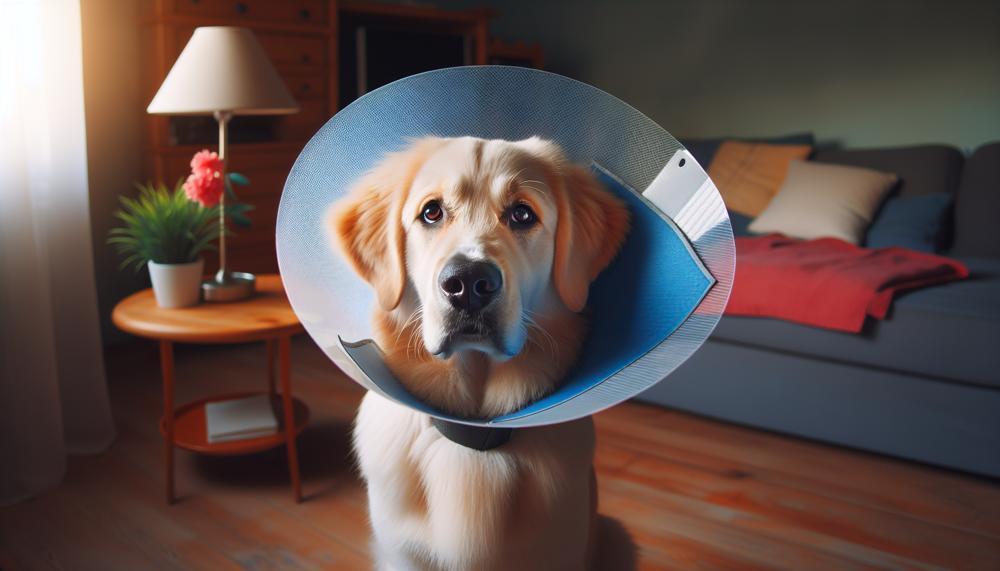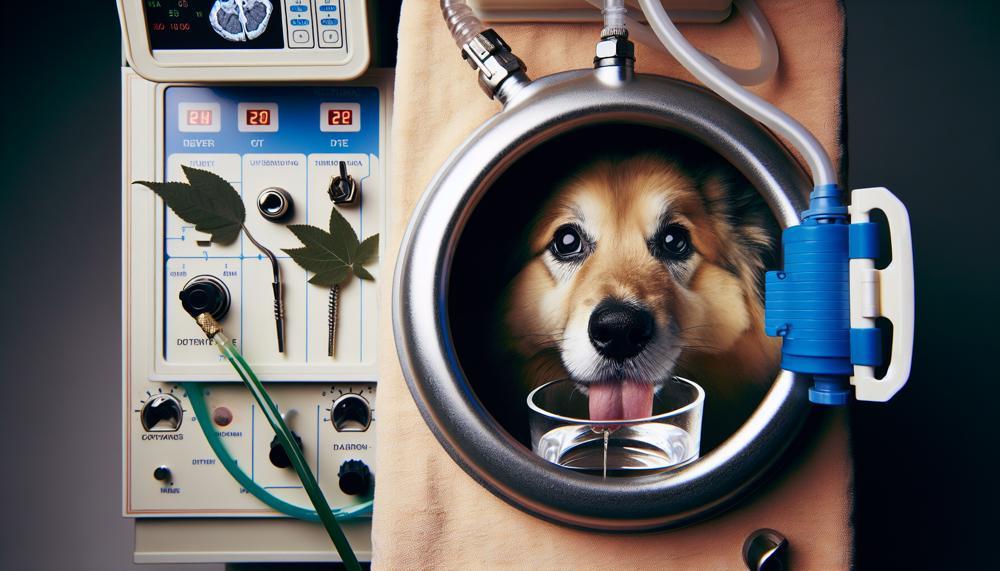Are you considering adding a furry companion to your family? Or perhaps you already have a beloved dog who has recently undergone surgery? Whether it’s a new addition or a loyal companion, ensuring that your pup stays hydrated after surgery is crucial for their recovery.
While it may seem like a simple task, getting a dog to drink water during this time is essential for their overall health and well-being. Here are some key reasons why:
- Surgery can cause dehydration: Just like humans, dogs can become dehydrated after undergoing surgery due to factors such as anesthesia, fasting before the procedure, and post-surgery medications. This can lead to fatigue, weakness, and other complications.
- Water aids in healing: Proper hydration is vital for wound healing and tissue repair. Without enough water, your dog’s body may struggle to heal properly and potentially lead to infections or delayed recovery.
- Prevents urinary tract infections: Dogs who are not drinking enough water after surgery are at a higher risk of developing urinary tract infections (UTIs). These painful infections require additional medical treatment and can delay the healing process.
- Keeps organs functioning: Water is essential for maintaining healthy organ function in dogs. Adequate hydration helps with digestion, circulation, and temperature regulation. Without enough water, your dog’s organs may not be able to function properly.
In short, getting your dog to drink water after surgery is crucial for their recovery and overall health.
So, let’s start now.
Place Water Bowls At His Frequent Visit Spots
Table of Contents
One helpful strategy to ensure that your dog drinks enough water after surgery is to place water bowls at their preferred spots.
Dogs often have specific areas where they like to relax and spend time, and having a water bowl in these locations makes it convenient for them to stay hydrated. This approach can be especially beneficial for dogs who may feel unwell or lethargic after surgery, as it eliminates the need for them to move around or strain to reach their water bowl.
In addition, placing water bowls in frequent visit spots can serve as a reminder for pet owners to regularly refill the bowl and ensure that their dog remains hydrated. This is particularly crucial during the first few days after surgery when dogs may be less likely to drink on their own due to the effects of anesthesia.
To make this strategy even more effective, it is essential to choose easily accessible and spill-proof water bowls. This will prevent any accidents or messes that could discourage a dog from drinking. Additionally, using larger or multiple water bowls can also be helpful, as it guarantees that your dog always has access to fresh and clean water throughout the day.
Furthermore, placing water bowls at a dog’s frequent visit spots is not only convenient but also serves as a gentle reminder for pet owners to monitor their dog’s water intake. If your dog continues to refuse water for more than 48 hours after surgery, it is crucial to consult with a veterinarian.
Adequate hydration is crucial for your dog’s recovery from surgery, so it is vital to ensure that they are drinking enough water.
Use A Dog Drinking Fountain
A dog drinking fountain is a valuable tool to ensure that your dog stays properly hydrated after surgery. By providing continuous access to fresh, filtered water, it can encourage more frequent sips throughout the day.
Here are some specific ways that using a dog drinking fountain can benefit a dog recovering from surgery:
- Encourages frequent sipping: After undergoing surgery, dogs may feel weak and lack the energy to walk to their water bowl whenever they feel thirsty. A dog drinking fountain placed near their resting spot can make it easier for them to take small sips of water throughout the day, ensuring they stay hydrated without exerting too much effort.
- Provides fresh, clean water: Surgery can be a stressful experience for a dog, which may affect their appetite and desire to drink water. By using a dog drinking fountain, you can ensure that their water is always fresh and clean, which may encourage them to drink more.
- Filters out impurities: Tap water may contain impurities that can affect its taste and smell, making it less appealing for dogs to drink. However, with a built-in filter in a dog drinking fountain, these impurities can be removed, making the water more palatable for your furry friend.
- Reduces risk of spills: Some dogs may have difficulty reaching or drinking from regular water bowls after surgery due to restricted movements or bandages. However, a dog drinking fountain eliminates this issue by providing a constant flow of easily accessible water without the risk of spills.
- Promotes recovery: Proper hydration is crucial for a quick and smooth recovery after surgery. By ensuring your dog has easy access to fresh, clean water through a dog drinking fountain, you are supporting their healing process and overall well-being.
Get Him A Doggy Smoothie
If your beloved canine has recently undergone surgery, ensuring they stay hydrated is crucial for their recovery.
However, some dogs may struggle to drink water post-surgery due to the side effects of anesthesia. In such cases, a doggy smoothie can be an effective way to encourage your furry friend to stay hydrated and nourished.
Ingredients:
- 1/2 cup of low-sodium chicken or bone broth
- 1/4 cup of canned wet food (ideally with a flavor your dog loves)
- 1/4 cup of water
- Ice cubes or crushed ice
Instructions:
- In a blender, mix together the broth, wet food, and water until well combined.
- Add in a few ice cubes or crushed ice and blend again until the mixture is smooth and frothy.
- Serve the smoothie in your dog’s bowl and allow them to enjoy.
Benefits of a Doggy Smoothie:
- Provides hydration: The combination of water and broth in the smoothie will help your dog stay hydrated.
- Flavorful: Adding wet food to the mix adds flavor and can entice your dog to drink more.
- Nutritious: Canned wet food is loaded with nutrients that can aid in recovery post-surgery.
- Soothing for sore throats: If your dog had surgery that required a breathing tube, the cool temperature of the smoothie can soothe their throat while providing hydration.
Other Tips for Keeping Your Dog Hydrated After Surgery:
- Keep water accessible: Ensure your dog’s water bowl is easily accessible and at a level with their head.
- Add flavor to water: You can also try adding low-sodium chicken or bone broth to their water bowl to make it more appealing.
- Offer wet food: Canned wet food or a combination of dry and wet food can also increase hydration levels.
- Use ice cubes or chips: If your dog has a sore throat from the breathing tube, offering them ice cubes or crushed ice can help soothe while providing hydration.
- Give water manually: If your dog refuses to drink on their own, you may need to manually give them water using a syringe or eye dropper.
- Consult with your vet: It is normal for dogs to have a decreased thirst in the first couple of days after surgery. However, if your dog has not had any water for more than 48 hours, it is important to consult with your veterinarian for further guidance.
To ensure your dog’s smooth recovery, it’s crucial to keep them hydrated. While a doggy smoothie can be a great way to encourage hydration, there are also other methods you can try. Keep in mind to consult with your vet if you have any concerns about your dog’s hydration levels post-surgery.
Add Water To His Food
Adding water to your furry friend’s meals can greatly benefit their hydration levels after undergoing surgery. By including extra moisture in their diet, you can help prevent dehydration caused by pain and discomfort. This is especially important if your dog is not drinking enough water on their own.
- Utilize Bone Broth: Bone broth adds flavor and nutrients to your dog’s meals while also increasing hydration levels. It contains collagen, glucosamine, and other essential nutrients that aid in recovery.
- Offer Wet Food: Wet food contains more moisture than dry food, making it easier for your dog to consume and providing additional hydration.
- Use a Syringe: If your dog is struggling to eat or drink on their own, you can use a syringe or turkey baster to manually provide them with water mixed in their food. This ensures they are getting enough liquids and nutrients during recovery.
- Follow Your Veterinarian’s Recommendations: It is crucial to follow your veterinarian’s instructions for feeding and hydration after surgery. They may have specific recommendations based on your dog’s individual needs.
Make Use Of Ice Pops
After your dog goes through a surgical procedure, it is important to ensure that they remain hydrated to support their recovery. However, some dogs may not be inclined to drink water on their own due to stress or discomfort.
This is where utilizing ice pops can come in handy as a unique and delicious way to encourage your dog to stay hydrated.
Here are some methods you can employ to make use of ice pops and keep your dog hydrated after surgery:

| Create homemade ice pops with water or low-sodium broth | Freezing water or low-sodium broth in ice pop molds can be a fun and refreshing way for your dog to stay hydrated. You can also add small pieces of their favorite fruits or vegetables for added flavor and nutrients. |
| Freeze smoothies into ice cubes | If your dog enjoys smoothies, you can freeze them into ice cubes and offer them as a cool and delicious treat post-surgery. Just ensure that you use safe ingredients such as yogurt, leafy greens, and fruits. |
| Hand feed ice cubes or ice pops | Some dogs may be hesitant to drink from a bowl after surgery, but they may be more receptive to hand feeding. You can offer them small pieces of ice cubes or ice pops to lick off your hand. |
| Utilize a travel bowl for on-the-go hydration | If you need to take your dog with you on errands or walks during their recovery, pack a travel bowl and offer them ice cubes or ice pops as a refreshing way to stay hydrated while out and about. |
| Provide alternative methods for drinking | If your dog is still resistant to drinking water, try offering it to them in different ways such as using a dropper or syringe, or mixing it into their food. Always make sure to have a larger water bowl than food bowl and keep it filled throughout the day. |
By incorporating these innovative ways to utilize ice pops, you can ensure that your dog remains hydrated and supports their post-surgery recovery.
Just remember to always consult with your veterinarian for any specific dietary restrictions or concerns tailored to your dog’s individual needs.
Tasty Broth That Your Dog Cannot Resist
There are numerous delicious broth options that can entice your dog to drink water after undergoing surgery. These options not only satisfy their taste buds but also provide essential nutrients that aid in the recovery process. Here are some of the top recommended broth options for your furry companion:
Homemade Chicken Broth:
One of the most highly recommended broth choices for dogs is homemade chicken broth. This flavorful broth is easily digestible and packed with essential vitamins and minerals that boost their immune system and facilitate healing.
To make this broth, simply boil a whole chicken in a pot of water until fully cooked, remove the chicken and shred the meat, and then strain the remaining liquid for a scrumptious homemade broth.
Bone Broth:
Similar to chicken broth, bone broth is another fantastic option for dogs recovering from surgery. It involves simmering bones (chicken, beef, or pork) in water for several hours to extract all the vital nutrients from the bones.
This broth is highly nutritious and possesses anti-inflammatory properties that can benefit your dog’s recovery process.
Beef Broth:
Beef broth is an excellent choice for dogs who may have lost their appetite after surgery.
Its rich flavor can stimulate their thirst and ensure proper hydration. Additionally, it contains essential amino acids and collagen that promote muscle and tissue repair.
Vegetarian Broth:
For dogs with dietary restrictions or allergies, a viable option is vegetarian broth made with vegetable stock or bouillon cubes.
This type of broth is safe for dogs and still provides necessary hydration and nutrients.
Store-bought Broths:
If you don’t have time to make homemade broths, there are also store-bought options specifically designed for dogs.
These broths come in various flavors such as chicken, beef, and even bone broth.
Make His Plain Water More “Interesting”
After your dog has undergone surgery, it is crucial to maintain their hydration levels to aid in their recovery. However, some dogs may be hesitant to drink plain water due to stress, discomfort, or medication side effects.
In these cases, it’s important to make their water more appealing to encourage them to drink and stay hydrated. Here are some ways you can make plain water more interesting for your furry friend:
- Enhance their meal: Mix in wet food or water with their dry food to not only add flavor but also increase their water intake.
- Offer low-sodium broth: A tasty treat for your dog, low-sodium chicken or beef broth provides much-needed hydration.
- Monitor hydration levels: Keep an eye on your dog’s gums and eyes for signs of dehydration such as dryness.
- Consider individual needs: Factors like breed, size, age, and activity level can affect how much water your dog needs. A general guideline is to offer around 1 ounce of water per pound of body weight.
- Encourage drinking: If your dog is not drinking enough water, try offering fresh water frequently or adding ice cubes to their bowl.
- Provide hydrating foods: Foods like canned pumpkin or coconut water can provide extra hydration for your dog in moderation.
- Check urine output and color: Observe your dog’s urine output and color as an indication of their hydration levels. Dark or concentrated urine may be a sign of dehydration.
- Ensure access to clean water: Make sure your dog has access to fresh, clean water at all times. Consider using a pet water fountain or adding ice cubes to the bowl for added appeal.
- Seek professional help: If you notice that your dog is not drinking enough water after surgery, consult with your veterinarian for further advice and potential treatment options.
Manual Feeding
Manual feeding can play a vital role in maintaining your dog’s hydration levels after a surgical procedure. This technique involves physically assisting your dog with eating and drinking, which can be especially beneficial if they are experiencing nausea or other digestive issues after surgery.
By ensuring sufficient hydration, you are aiding in their body’s healing process and promoting a faster recovery.
One way manual feeding can help keep your dog hydrated is by using a syringe or turkey baster to feed them water. This method allows you to control the amount of water they consume and makes it easier for them to swallow if they are experiencing any discomfort from the surgery.
Additionally, you can also use these tools to provide your dog with soup broth or juice from canned chicken or tuna, which not only provides hydration but also adds essential nutrients to their diet.
Another effective way manual feeding can assist in maintaining hydration is by offering your dog ice to munch on. This can be particularly helpful if your dog is not interested in drinking water, as it provides a fun and refreshing way for them to get much-needed fluids. You may also consider switching to wet food during this time, as it contains more moisture than dry food and can help increase your dog’s water intake.
It is crucial to note that manual feeding should not replace regular access to fresh water for your dog. Instead, it should be used as an additional means of ensuring they are getting enough hydration during their recovery period. Monitoring your dog’s hydration levels and ensuring they have easy access to fresh water at all times is still essential.
Conclusion
In conclusion, it is vital to keep your dog hydrated after surgery to aid in their recovery and overall well-being.
Surgery can lead to dehydration, which can impede wound healing and increase the risk of infections and organ dysfunction. To prevent these complications, there are various methods you can use to encourage your dog to drink water.
These include placing water bowls at frequent visit spots, using a dog drinking fountain, making doggy smoothies or adding water to their food, and offering ice pops. Not only do these techniques promote hydration, but they also provide additional nutrients to support a smoother and faster recovery.
By implementing these strategies, you can ensure that your furry friend receives the gift of hydration for optimal post-surgery care.



